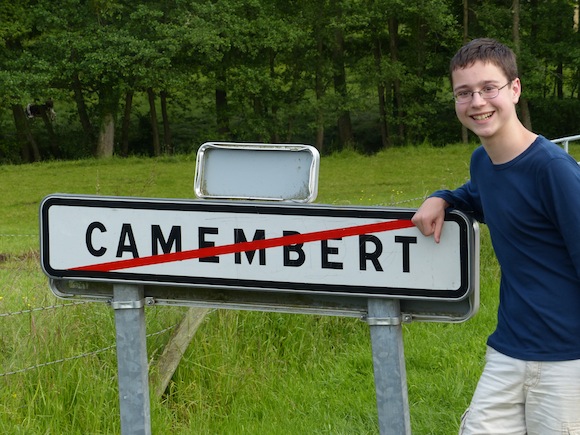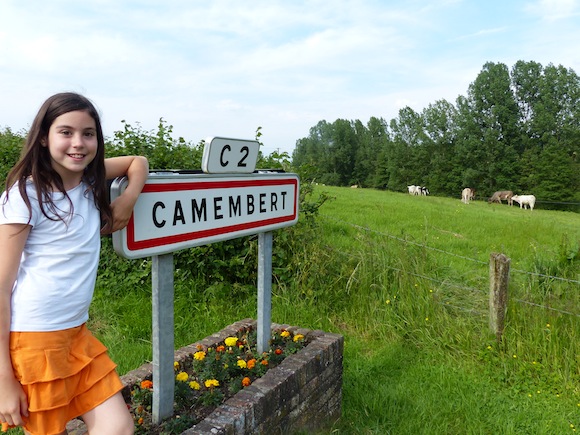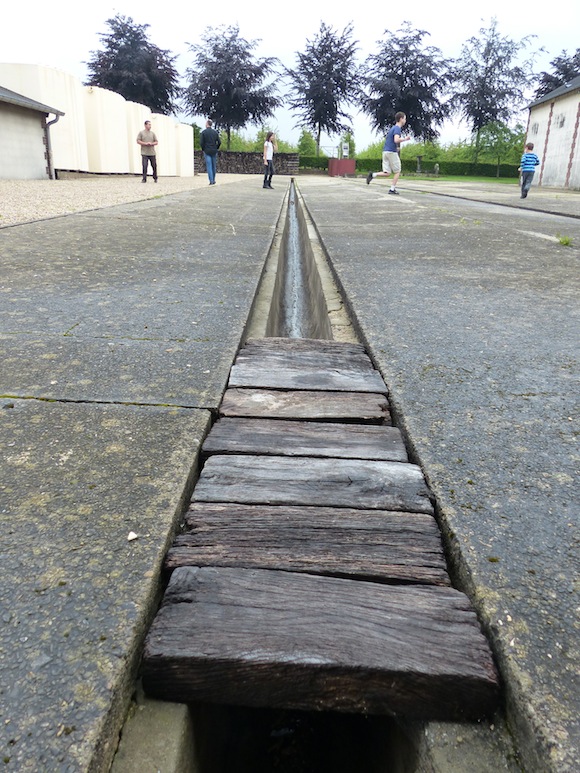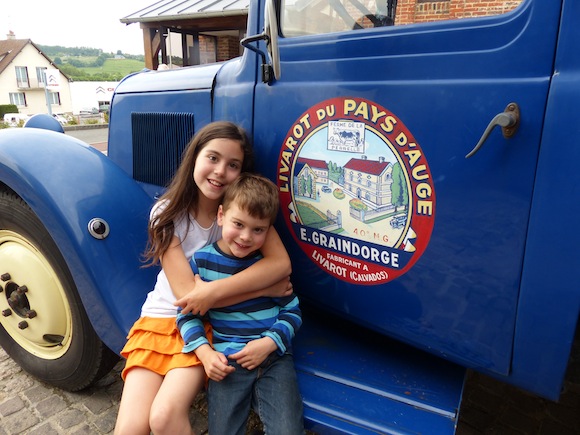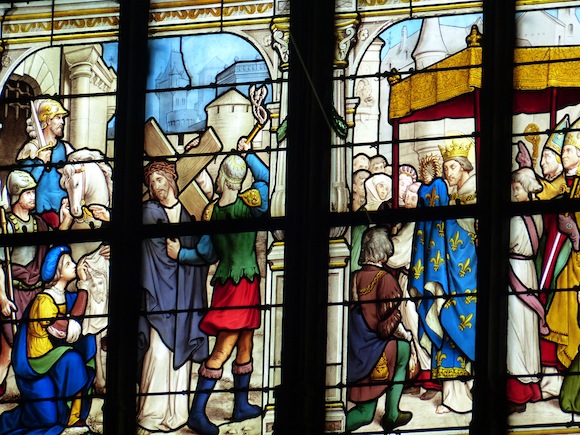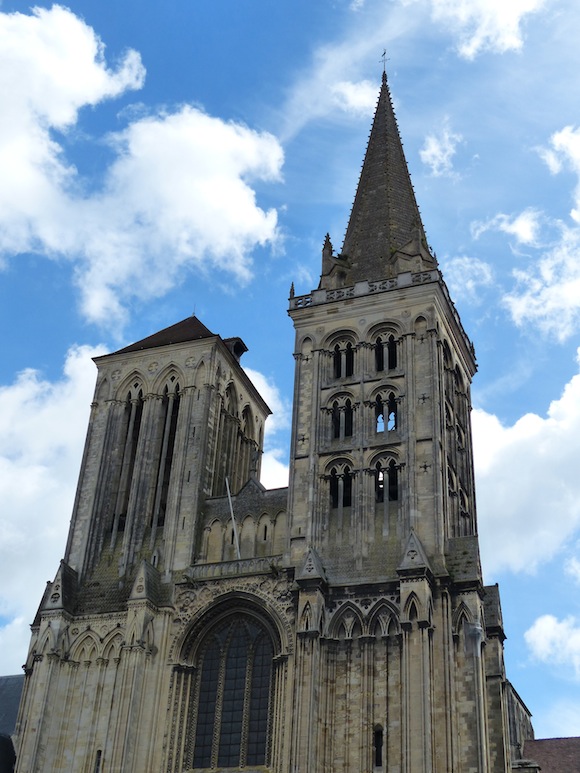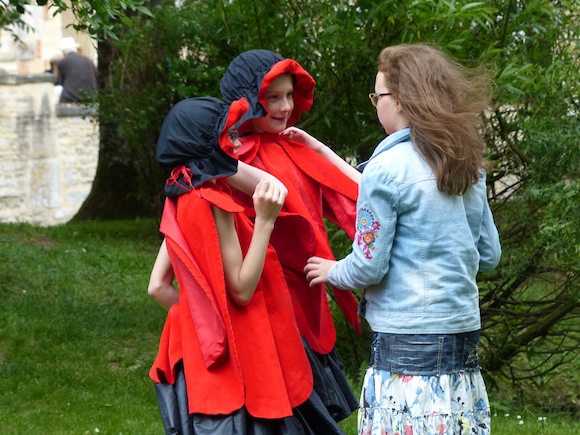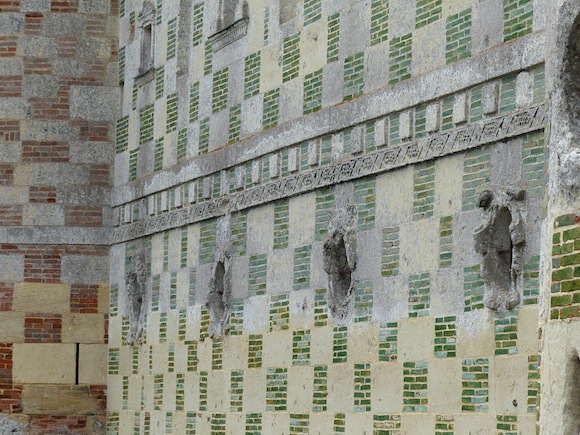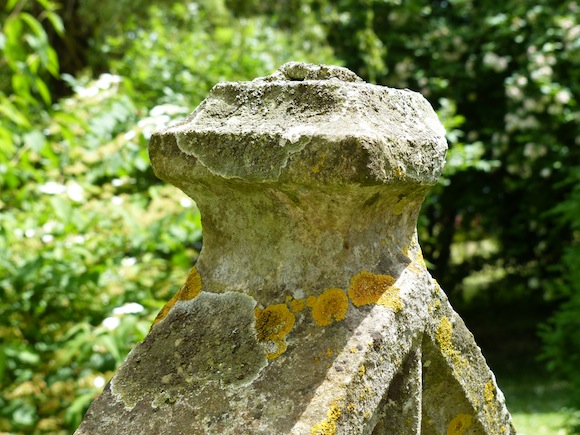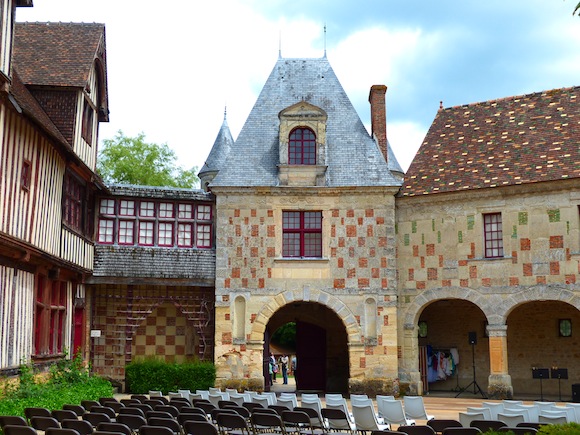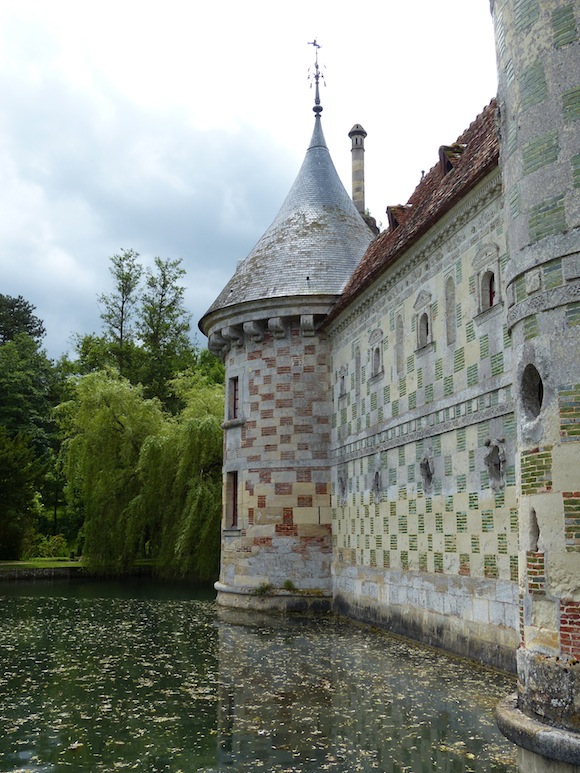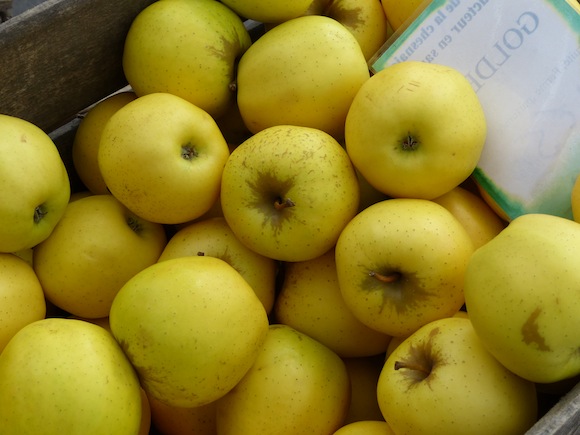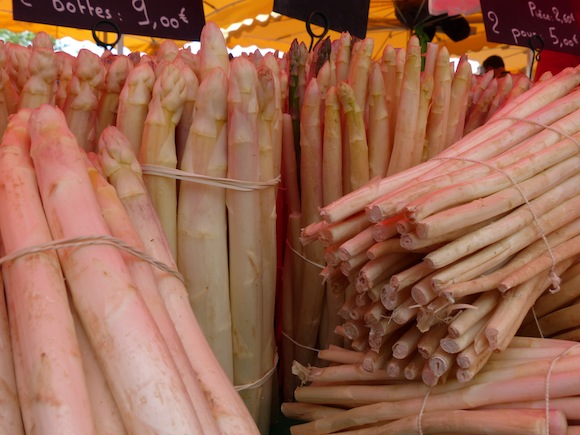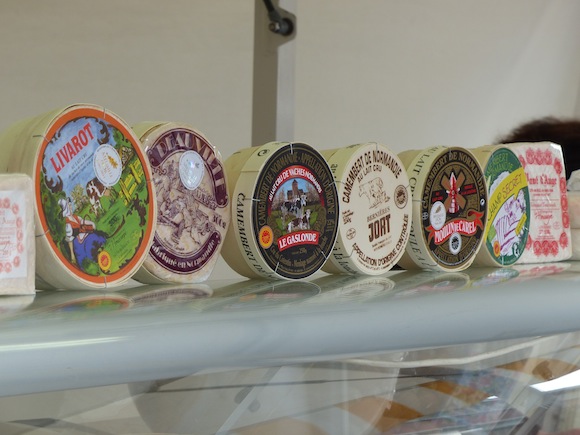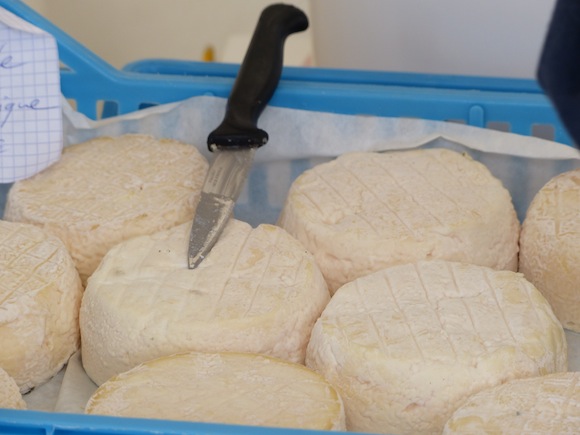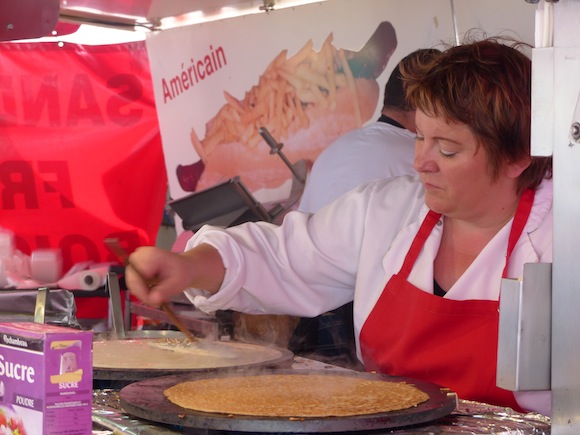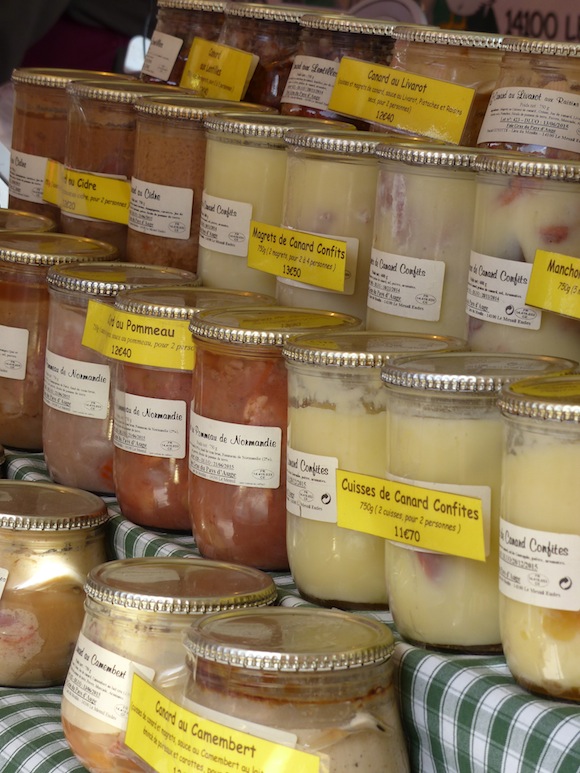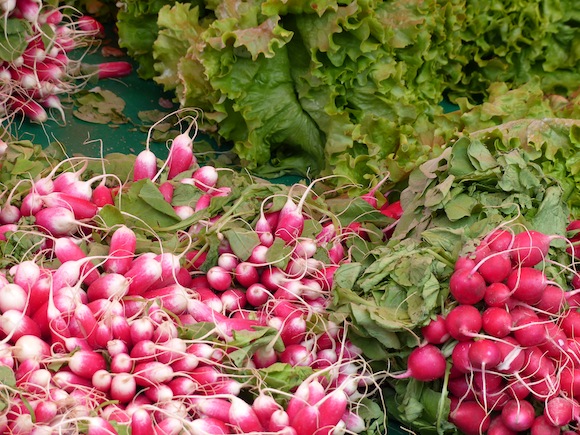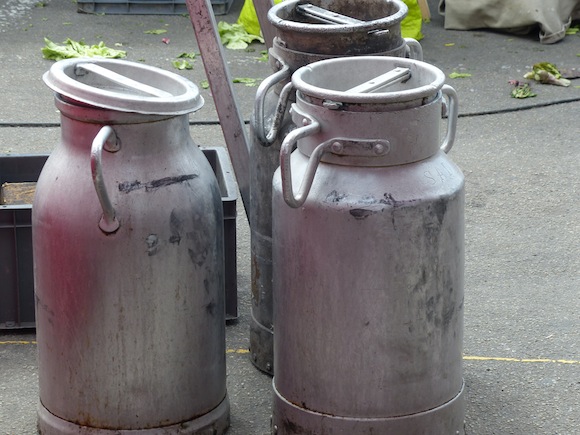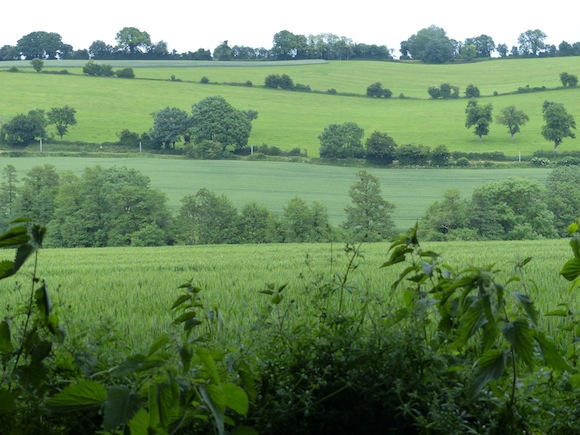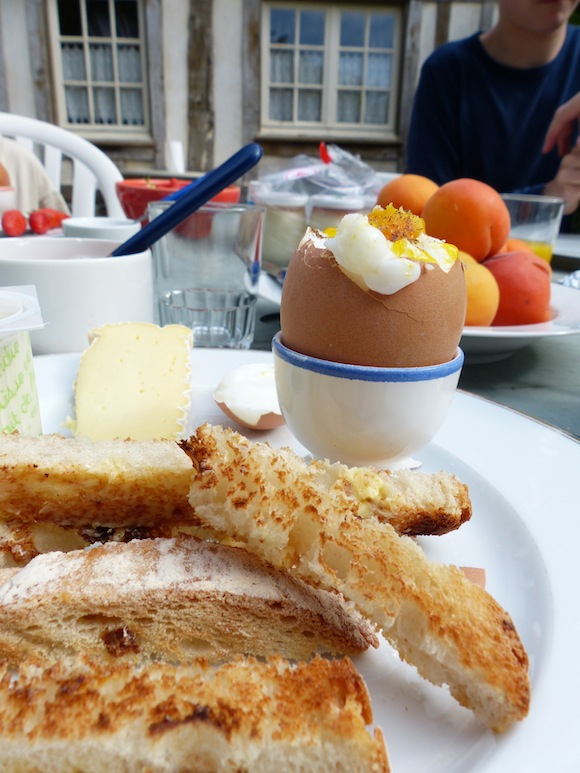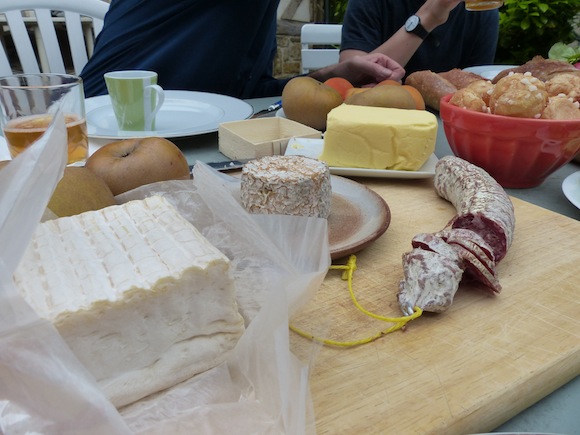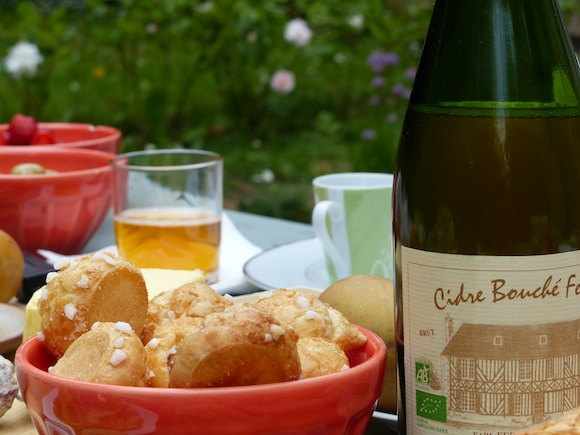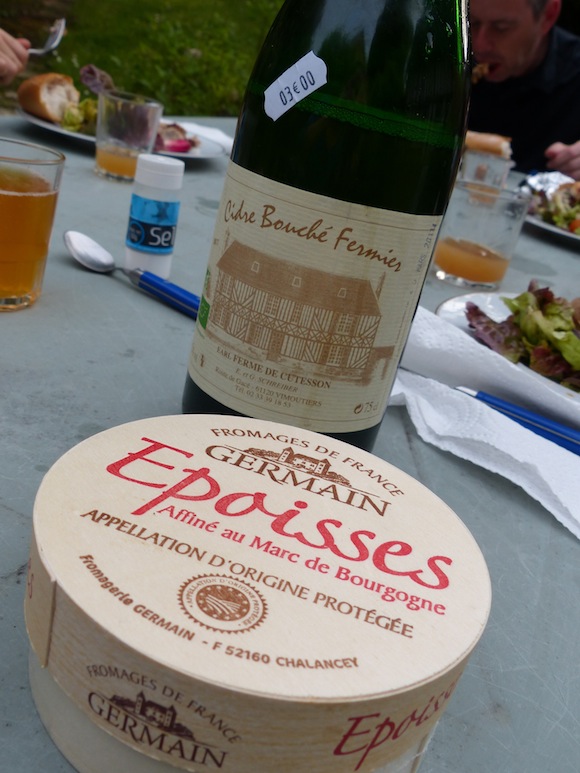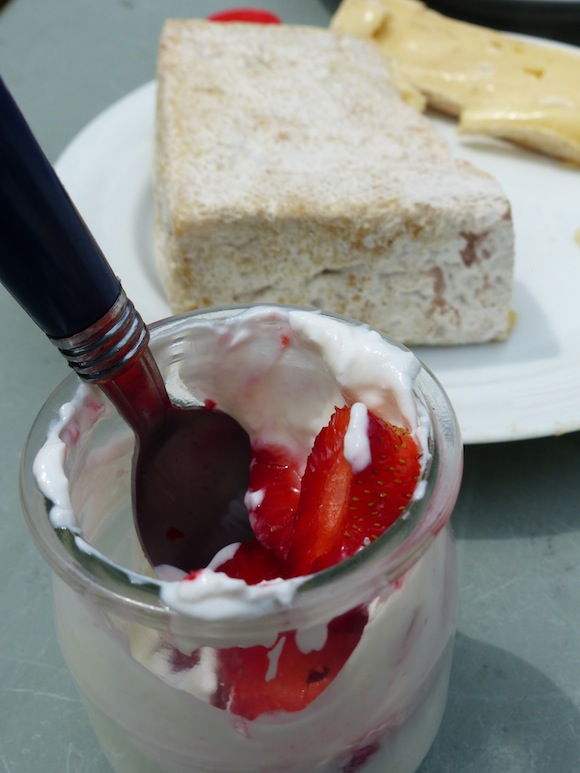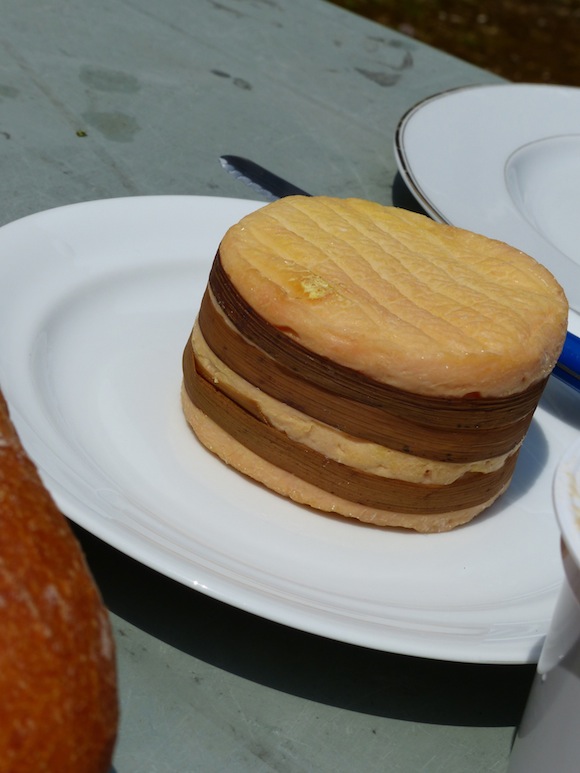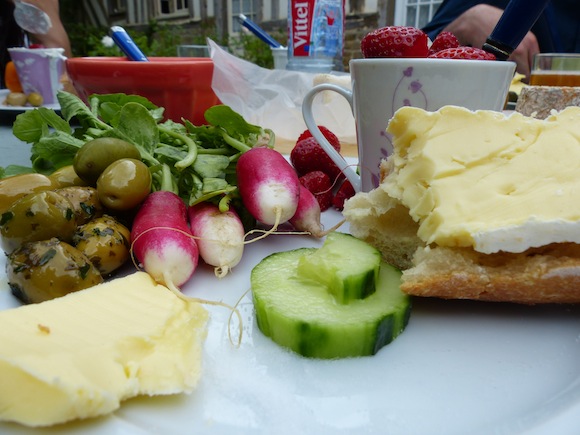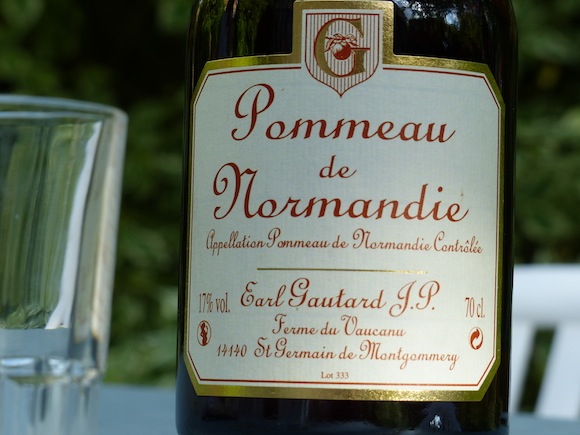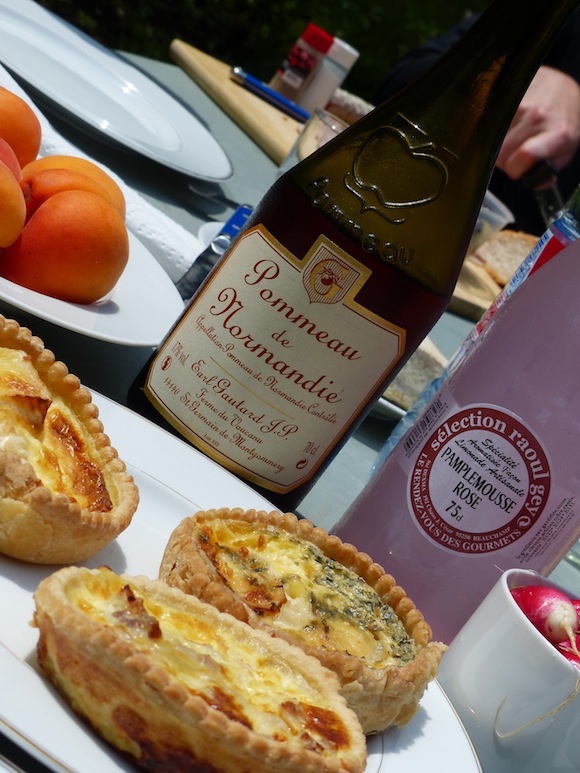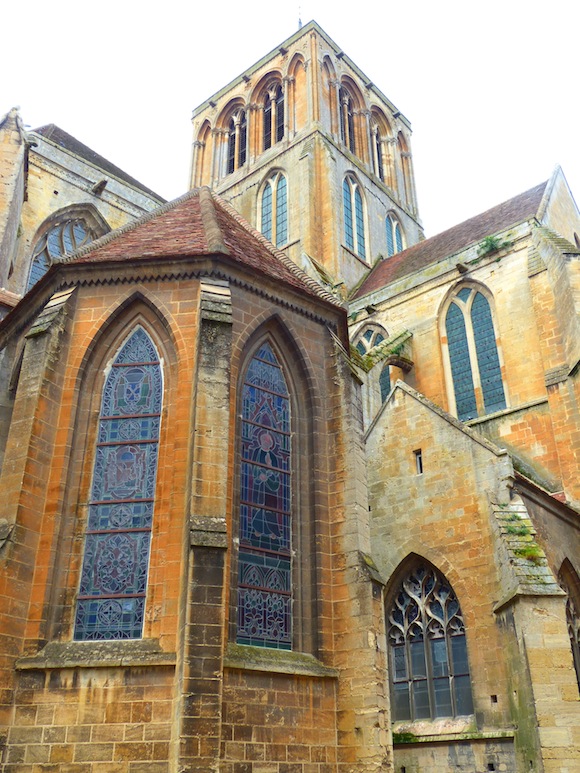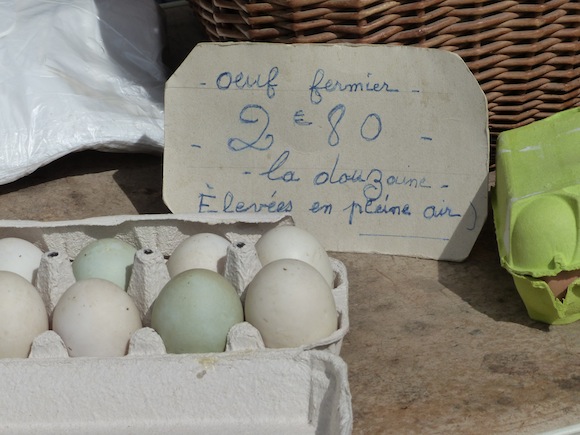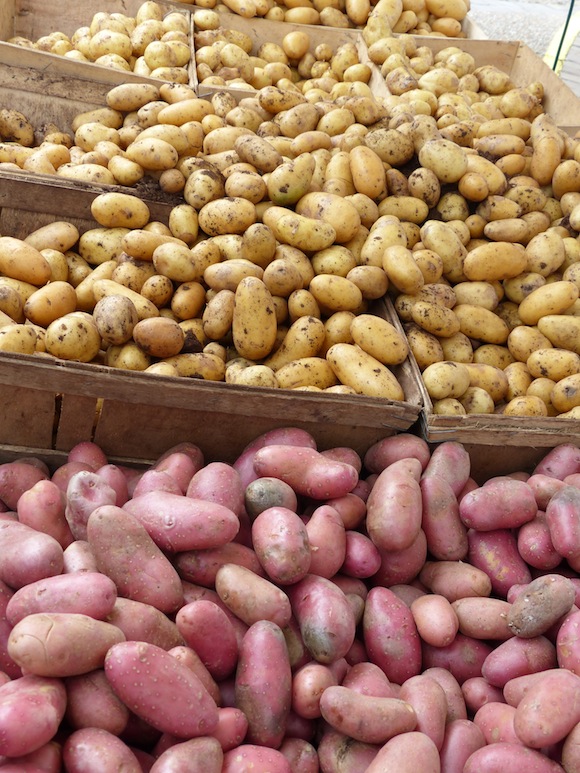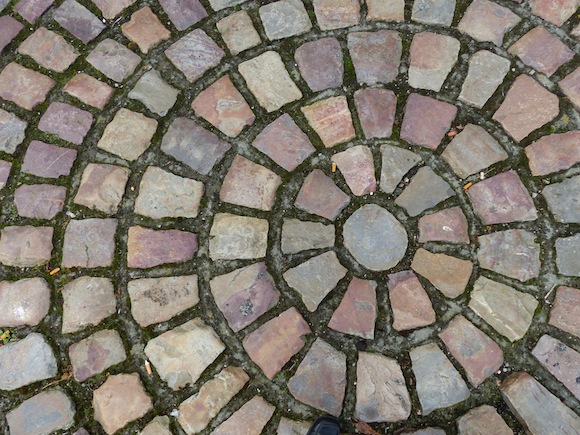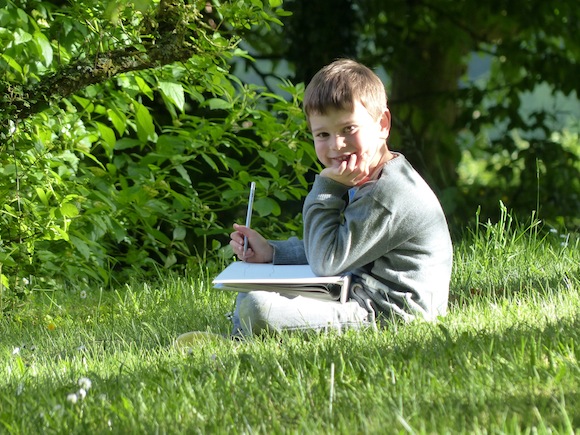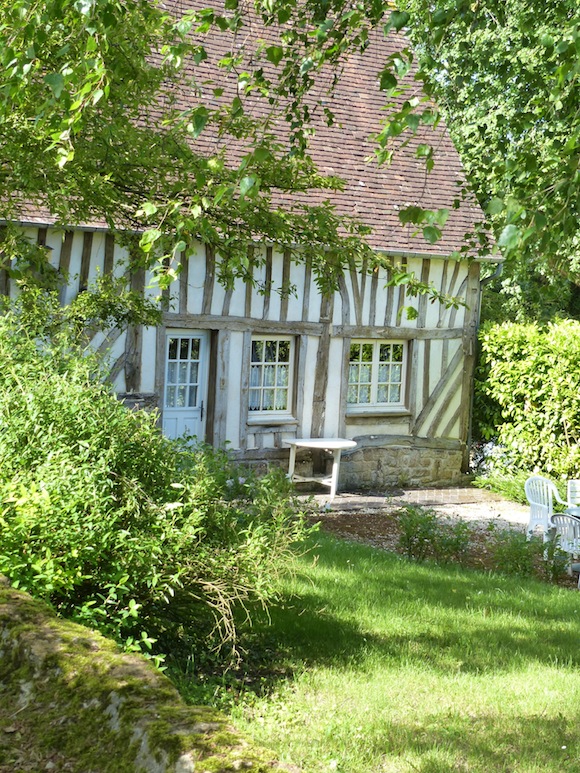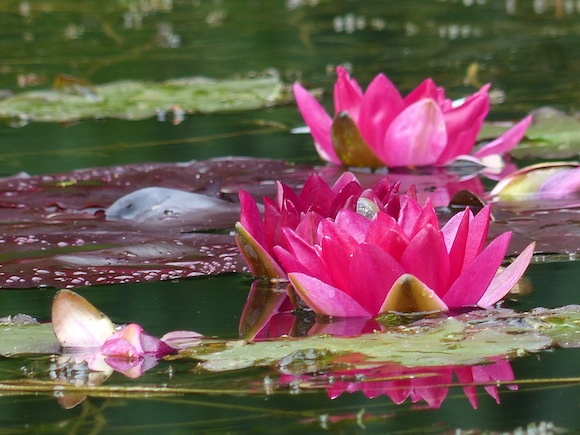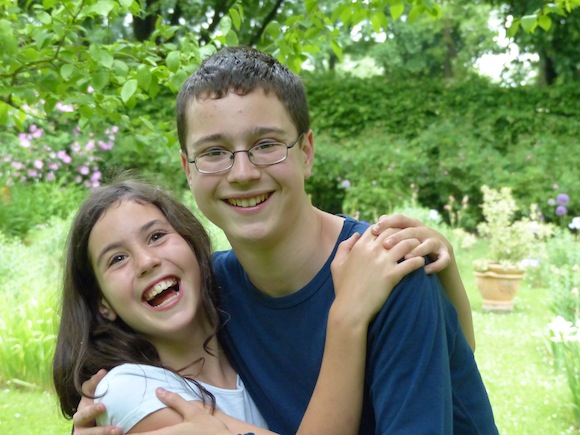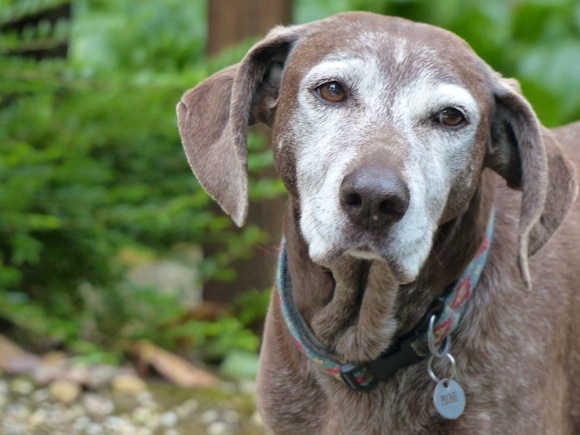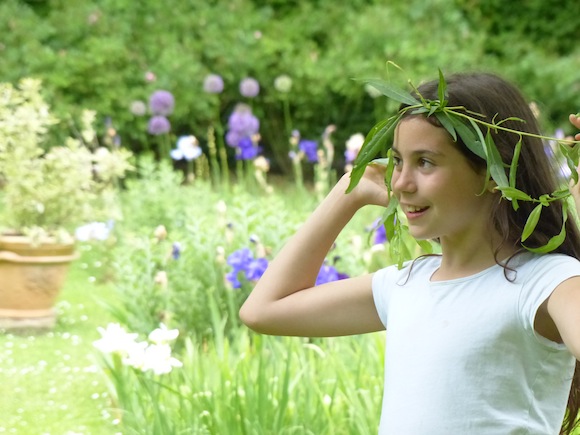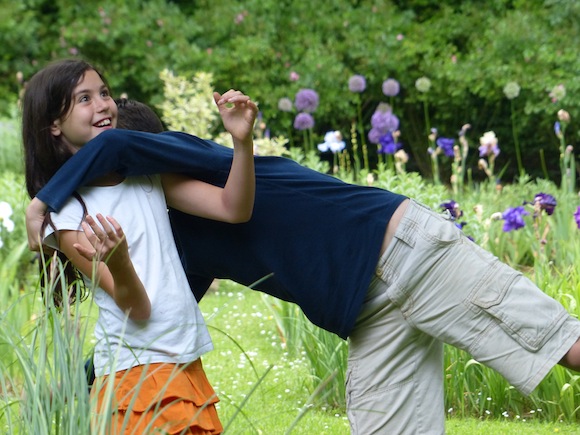Normandy, France
/
Normandy is burnished like copper, like calvados in a glass, like sedge wound around a ripened round of Livarot. Simple in appearance, but sfumato in resolution. It is no wonder Monet painted in Normandy. It's a region that appears completely accessible—every village pristine, every market a joy, every half-timbered house a museum piece. But though five days gave us a real appreciation for what the region has to offer, it gave us little insight into the people. They hold back. After 11 months in Italy, the difference between the northern reserve and the southern exuberance was palpable. Siena said she probably wouldn't have noticed it if we arrived from the States, but coming from Umbria, where a stranger is a friend in training, it was a little disorienting. Everyone was perfectly pleasant, and some would shyly offer a smile. But we didn't get a sense of anyone. We hardly expect to meet someone as instantly warm and embracing as Pepe in Spain every time we travel. We knew not to hope for a day of wandering with a local, talking and connecting. But we didn't expect to be held at arms length, as it were. Angelo says that the people of Northern France are more like the English than the French. Maybe he's on to something.
In any case, it was a serene and wholly lovely place to visit. But it didn't have enough grit or stick to make me fantasize about living there, as I often do when I'm traveling. That said, that loveliness took me by surprise because there is so little information about Normandy in the travel community. People know very little about it, except as it pertains to D-Day. In fact, when I wrote a trip report about our 5 days for Trip Advisor, an innkeeper commented that her guests typically only come to Normandy for 1 night. Two maximum. Just enough to swoop in from Paris, see the D-Day beaches and Mont San Michel, and then they leave. When she tries to encourage them to stay longer, to go deeper into Normandy, they express confusion. What in the world could they possibly do there for more than 3 days?
This makes me sad. It's endemic to the modern style of traveling. Here's what I see, everywhere. Tourists whose visit is so guidebook driven, so checklist determined, that they connect not at all with the local culture. It saddens me when I see tourists order in English (this is not uniquely American, I've seen this in Germans, Chinese, etc… if they don't speak the language, they use English). Of course people shouldn't have to be fluent to travel, but if you are going to a foreign country, why not at least learn the words for yes, please, and thank you? Instead, it seems like people treat traveling like they are channel surfing. See things in fits and bursts, but live like they are in their home country. The world is a wide place. It saddens me when people who have the means and opportunity to travel don't allow themselves the luxury of taking off their country of origin blinders of defining experience by what their guidebook suggests, and sinking into where they are.
I posted about our unplanned-by-necessity vacation on Trip Advisor. And how we had to use the local tourist office in Lisieux to get a map and tourist booklet, since we hadn't had time to do the research we usually do. Instead of being completely informed about every aspect of the places we visited, we read a blurb in the booklet. No photos. Just a blurb. Which allowed us to retain a sense of adventure for our days. Everyplace seemed novel. With the exception of a day trip to popular Honfleur on the coast (which was the low point of our trip—it's very crowdedness made it feel soulless), everything we did came from that tourist booklet which was for the Pays D'Auge area of Normandy. It was marvelous. Anyway, someone responded to my suggestion of perhaps using tourist offices and recommendations of innkeepers (rather than forming a list of "must do"s, which sometimes wind up feeling lackluster) by writing that media has given us access to sites in advance of our visits, so seeing something for the first time is not really seeing it for the first time. But no media can capture the bustle of a market, the smell of a bakery, the taste of fresh butter on a still warm baguette. The living. That is better than the seeing.
In any case, living is almost all we did in Normandy. And it was marvelous, even without feeling the hitch of connection to the people. This should come as no surprise, but the food was our favorite part, specifically the markets. Since the region we visited isn't widely touristed, the markets didn't feel like they were a show for visitors, but rather the way people did their shopping. Small vendors, some with just strawberries or just radishes or just mussels or just goat cheese. My favorite, also no surprise, were the cheese vendors. There was one in Lisieux in particular that I liked, because the women who ran the stand had that dark hair, apple cheeked, soft yet sturdy sense that I equate with a good dairy diet. And you could order fromage blanc (excellent with sugar and topped with fresh berries) or cream, and they would scoop it out of large canisters. And all the dairy was so inexpensive. A few euros for raw milk Pont l'Eveque. Keith found Epoisses in the grocery store for €4,00. It's around €20,00 in the States. Plus it was the raw milk variety, which you can't get in the States because the FDA prohibits the importation of raw milk dairy products that have been aged less than 60 days. Which I personally find infuriating, but my belief in the power of raw milk is for another day. Suffice it to say that raw milk cheese is a whole different thing. Wilder, grassier, deeper, less plastic. Just…richer, and more flavorful.
Besides using the markets as a cheese ogling venue, we also bought eggs for our breakfasts, radishes to enjoy spread with creamy Normandy butter and sprinkled with salt (one of my favorite snacks, ever), strawberries, apricots, apples, and duck. We've never eaten so much duck, and Nicolas has declared it is his favorite meat. At one stand we bought a duck salami, and at another we bought duck rillette—duck meat cooked in its own fat until it's tender and in shreds, and then combined with that fat to make a paste. Kind of like duck confit turned into pate. Totally delicious.
Our tourist brochure directed us to a covered market in nearby Saint-Pierre-sur-Dives. The vendors spilled out into the areas around the old medieval building that housed the market. Poultry for sale, ducklings, fuzzy rabbits (perhaps this is optimistic of me, but they looked more like companion breeds of rabbits than meat), quails with their eggs. And against a wall of the outside, fish vendors. Both markets were a riot of colors and smells. More restrained than the Sevilla markets, yes, where vendors were waving our children over to take pictures of their fish, but peaceful and stunning in the evocativeness of the products. In fact, our best meals in Normandy were the picnics at our table.
Partly because the food was so incredible, but also because the ambience. We stayed at an old Priory that I found on Sawdays. It was situated outside the town of Vimoutiers, nestled in the rolling hills. So the views to green hills or greener hills was deep and lovely. But really the charm was in the grounds. Gardens and gardens and more gardens stretched out all around. And those gardens rank as one of the best parts of our vacation in Normandy. A birch path, duck ponds, a water-lily pond, an iris garden, a rose garden. Our cottage had an unfortunate musty scent which would go away when I would cook the local sausages and jars of cassoulet (cassoulet with duck–another find), but then creep back. I suppose it was the downside of being nudged into the hillside, with a creek trickling behind the house. So we spent little time indoors, but used our yard and the gardens all the time. And played with Prugne, the owner's sweet and ancient dog. Who had a penchant for stinky cheese rinds.
Another activity that we found through that brochure was Chateau de Saint-Germain-de-Livet, a castle located outside Lisieux. It was straight out of a Disney version fairy tale–with swans gliding in the moat, a section that was half-timbered, colored bricks for a sense of whimsy. To add to the appeal, it was the venue for a music and dance performance later in the day. So there were ballerinas preparing in the arcade, and strings rehearsing by the creek. Magical.
Though we were too far from the Normandy landing beaches, there were World War II memorials everywhere. The town we stayed in Vimoutiers was liberated by Canadians, and sports a German tank outside the city limits. And after our lackluster visit to Honfleur we cheered ourselves with a visit to a nearby military base that was used by the Germans during the war. It was eerie how quiet it was. We walked into the bunkers, and looked out to the water and just felt the dimness. And then Gabe referred to them as "bonkers" and that lightened the mood. They are now bonkers in our family, please don't anyone disabuse my child. At one point, he climbed up on a weapon platform (yes, I'm sure there is a more technical name, I blame my Quaker pacifism for my lack of artillery knowledge, but in truth it's because I've never found war as interesting as cookies), and watching all three dance instantly brought to mind that I bet the Germans could never have imagined three American youth playing on the relics of their weaponry. Fascinating. As fascinating as observing the ivy covering the bonkers. Nature takes back her own.
Since cheese was a focus of our trip, we also visited the Graindorge cheese factory, where they make Livarot, Pont L'Eveque, Camembert, and Neufchatel. Gabe and Nicolas were such good sports. This was made easier by the fact that the cheese making happened behind glass, so there was no scent. And the museum was designed beautifully. Signage in English as well as French, which was a pleasant surprise, and self directed. So we moved from room to room, watching a video about the care of the cows, watching as the technicians checked the bacteria levels in the milk, sighed at the cheeses ripening, and excitedly observed the packaging room. It was delightful.
Besides cheese, Normandy is known for its apples, and apple products. We were not there during apple season, so the fruit was not good, but the cider, pommeau, and calvados were fabulous. Apple farms tended to sell a juice, too, which our children found completely delicious, but Keith and I focused more on the other products. Cider in two strengths which some makers make in a way that it tastes almost "off" to me, and some make it so it tastes like an apple-y beer (which I preferred). Pommeau which is a combination of cider and calvados and tastes almost like sweet vermouth—a lovely aperitif. And calvados which is like apple grappa. We visited two of the farms listed in the brochure, our favorite of which was Roger Groult, because they offered us a tour around the farm. We understood very little, but it was still wonderful to see where they boiled the cider to collect the steam, and then do it again in a double distilling process. And even more wonderful when the worker uncorked one of the barrels in each room so we could smell the calvados. And also wonderful when we were invited to the tasting room. I told the lady to go easy on my tastes, but she insisted on pouring generous glasses because she wanted us to note the color. She said I didn't have to drink the whole glass, but I felt badly leaving any behind. You can guess who was the winner in this scenario. His name rhymes with Keith.
Our other trips abroad have been to cities—Brussels and Sevilla. This was our first to include time in the country, since now the kids are out of school and we have more time. We loved having the intensity of Paris followed by the dreamy gardens and marketing of Normandy. Those days in the countryside were utterly relaxing, as we planned our days adventure over breakfasts of fromage blanc and yogurts in glass pots and fruit and baguette and oh, that butter. It was a nice balance of serenity and some activity—the cheese and calvados jaunts, the marketing, the castle. So even though nobody smiled at our children's attempts to speak a foreign language, as they did early on here, or in Sevilla. And even though we struggled to find a restaurant open on a Tuesday night. Even with a sort of gentle seriousness contrasting with our arms-wide-open approach, we had a simply marvelous time. We might not have cleaved with the people, but we really sank into their food ways, their markets, their traditions, their history, and their patterns.
Best of all, Siena reports that this trip, her birthday trip, was the best vacation of her life. Of course, she didn't want it to be finished, but she also looked forward to getting home. To Spello. Though she was completely enamored with Normandy, it also served as a reminder of what we've learned by living in Italy. How to travel and really see, how to be open and aware, how to appreciate each other, and how to abandon the need for perfection in favor of relishing our latent exuberance.
